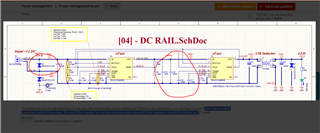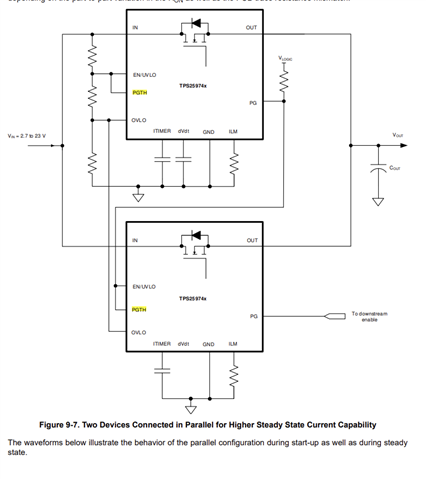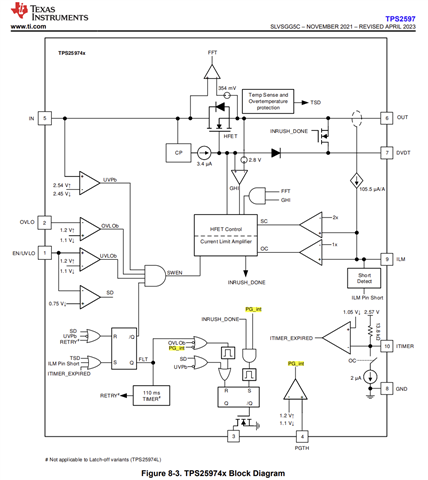Hello,
we designen a board with two eFuses in series to meet the one failure requirements. So if one fuse wouldn't trip in a case of overcurrent, the second fuse should do.

As soon as we test a short circuit / overcurrent, the circuit interrupts the current flow. But after removing the (over-)load it doesn't recover anymore. By bridging the fuses on defective board, we found out, that it varies which fuse has been burned.
We tested the circuit with electronics load and with normal high power resistors of 2Ohms to be sure there is no overload caused by the internal input capacitor inside of the e-load. So one 2Ohm resistor for normal operation and a second 2Ohm resistor in parallel to initiate an OC event.
The fuse breaks without a smoke or sparkle.
There are 4 more 22uF capacitors, which are not in the schematic above.
What could be the issue in this circuit?
We are ware of floating PG signal, but could it cause this kind of damage to the fuse?




